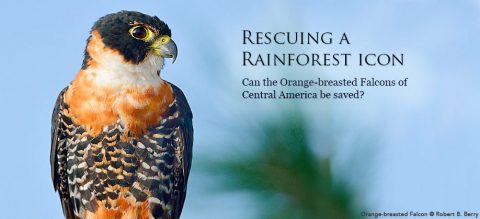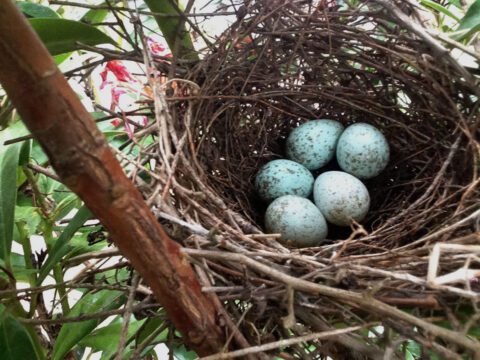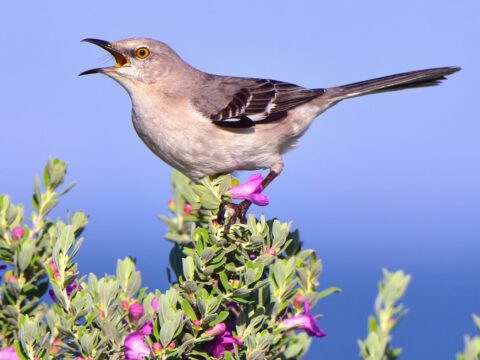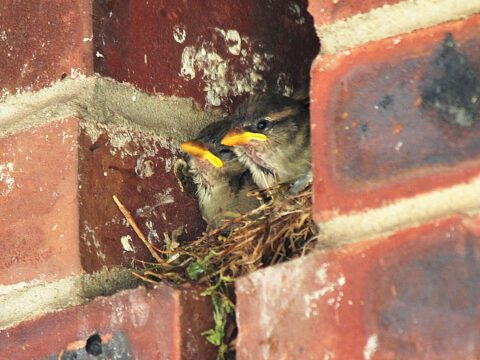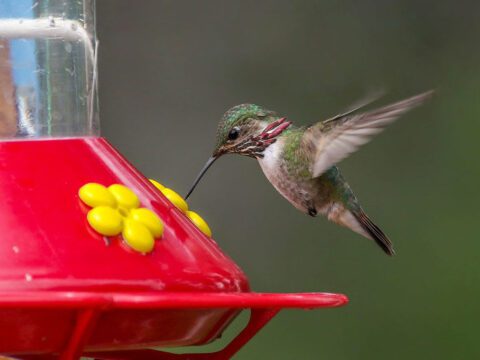Like Chasing Tornadoes: the Fun and Challenge of Mixed Species Flocks
By Jack Connor
From the Autumn 2014 issue of Living Bird magazine.
June 18, 2015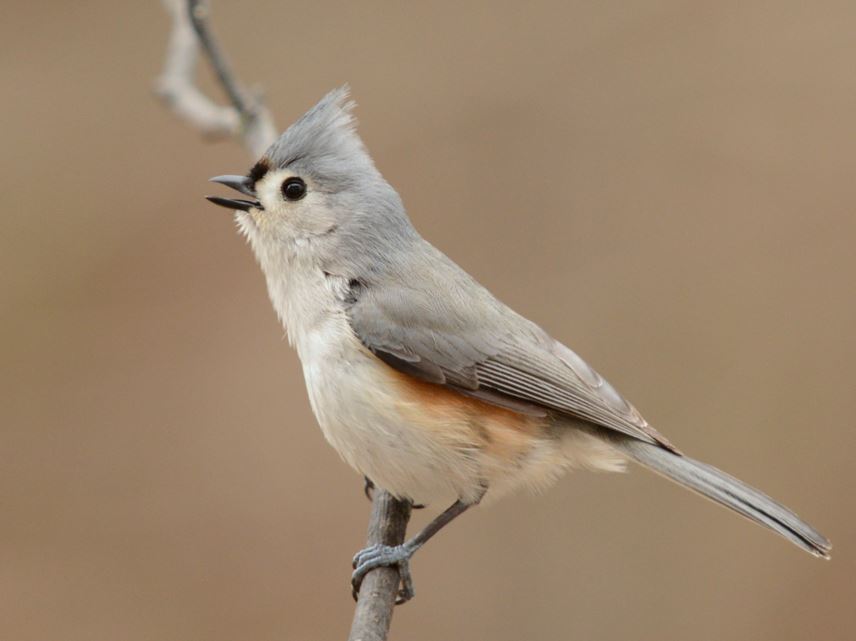
If you want to sharpen your observational skills with a first-class test of your birding skills over the next few cold months, try answering this question: What is the typical makeup of the mixed-species flocks in your local woodland? In other words, which species join these groups and in what numbers?
A couple of decades ago, I tried to help a student answer that question for the forest on our college campus, and I learned it is a much tougher challenge than I had imagined. My students generally design their research projects around questions they can investigate while walking slowly or standing still: When do robins switch from fruit-eating to ground-gleaning? What is the average dive time for Hooded Mergansers? Almost all are novice birders, and they like to check their field guides and share information with each other while they watch. (Also, socializing is easier in a dawdling crowd.)
Bert knew birds better than most of his classmates, was less interested in chatting, and was genuinely intrigued by the puzzle he chose. “Those flocks come through my backyard all the time—chickadees, titmice, woodpeckers, yellow-rumps, nuthatches—and I’ve always wondered how they stick together and which ones are the leaders. This semester I can figure that out.”
On our first of several field trips in January and February he managed to convince a couple of other students to run with him. “I think I hear titmice calling… chickadees, too! There’s a downy! It’s a mixed flock! Come on!”
Bert and his buddies would go racing off, ducking under the branches, hopping shrubs, batting away greenbriers with their arms, and every few steps trying to aim their binoculars at the rapidly departing birds. Ten or fifteen minutes later they would come back to our group, with faces flushed, not sure exactly what they had just seen: How many chickadees? How many titmice? Which birds were leading the parade? Was the creeper on the tree trunk a member of the group or just a bystander on the route the flock happened to take? When and where the flock had left them was often uncertain. “I don’t know,” Bert would say, shrugging. “They just seemed to disperse.”
As the semester wore on and his classmates grew less willing to run, I joined him myself a few times. My eyes, ears, and legs were all younger in those days, but still I was not much help. The first truth you discover: keeping in touch with the birds requires high-speed guesswork about which way they will go next. The second truth: even when you guess correctly, running loses to flying. By mid-March the Paridae (chickadees and titmice) were courting, and the winter flocks became few and far between. By early April Bert had recorded the last of them. I have forgotten now what conclusions his data demonstrated, but I do remember the opening line from his oral presentation at the end of the course: “Studying mixed-species flocking is like chasing tornadoes. You never know when to expect them or where they’re headed, but when they do come, you have to be ready to go!”
Scientists have been studying mixed-species flocking since at least the 1850s, when Henry Walter Bates noted the phenomenon near the village of Ega (now Tefé) in northern Brazil. “Now and then the surrounding bushes and trees [swarm] with scores, probably hundreds, of birds, all moving about with the greatest activity,” he wrote in The Naturalist on the River Amazons. “Tanagers, ant-thrushes, hummingbirds, flycatchers, and barbets, flitting about…The bustling crowd loses no time, and although moving in concert, each bird is occupied in its own account searching bark, leaf, or twig…In a few minutes the [group] is gone, and the forest path remains [as] deserted and silent as before.”
Mixed flocks in temperate forests do not grow as large as those in the tropics, but the dynamics are similar and in both cases touch on deep issues of Like Chasing Tornadoes by Jack Connor Trying to keep up with mixed-species flocks animal behavior and ecological adaptation. Bates noted one such issue with his observation that “each bird is occupied in its own account.” Unlike individuals in single-species flocks, where all members are competing for the same food, birds in mixed flocks can specialize on different prey—partitioning the resources by “searching bark, leaf, or twig.” Flocks in the Northeast typically include mostly leaf and twig gleaners (chickadees and titmice) with lesser numbers of bark gleaners (woodpeckers, creepers, and nuthatches), each exploring different parts of the trees. Depending on your latitude, you might also find kinglets, warblers, and vireos joining these groups.
Why so many species participate is a complicated question, and probably the main reason so many researchers have been attracted to the phenomenon. One potential cost of any kind of flocking, of course, is increased danger. All other things being equal, a noisy group should attract more predators than any solitary individual. Giving an alarm call to alert other birds also seems riskier than simply keeping silent and ducking into safety. Alarm calls (and regular contact calls) in single-species flocks make sense if individuals are signaling to their mates, siblings, or young. The extra risk and work is compensated for by the likelihood of protecting close relatives and keeping them close. In mixed flocks, however, the compensation seems less clear.
Follow any mixed flock in North America for even two or three minutes and you will note that chickadees and titmice are by far the noisiest members, and their calls seem to hold the group together. If a hawk passes overhead, you might even hear the parids’ alarm calls— high-pitched, single-notes: zheee or seeee. But what can a titmouse or a chickadee gain by helping to protect a nuthatch or woodpecker?
A 2011 study by Thomas A. Contreras and Kathryn E. Sieving (“Leadership of Winter Mixed-Species Flocks by Tufted Titmice” in the International Journal of Zoology) provides strong confirmation of what several earlier researchers have argued: mixed flocks are not communal organizations where responsibilities are fairly shared. The parids are the “nuclear” members of these flocks and do virtually all of the communicating; the “attendant” or “satellite” species—woodpeckers, nuthatches, creepers, and others—trail along, exploiting the parids’ need to keep in contact with their own species. Contreras and Sieving followed 20 mixed-species flocks over three winter months in north-central Florida and found it was the movements of Tufted Titmice that defined the flocks’ overall directions. They led and the “satellite” species followed.
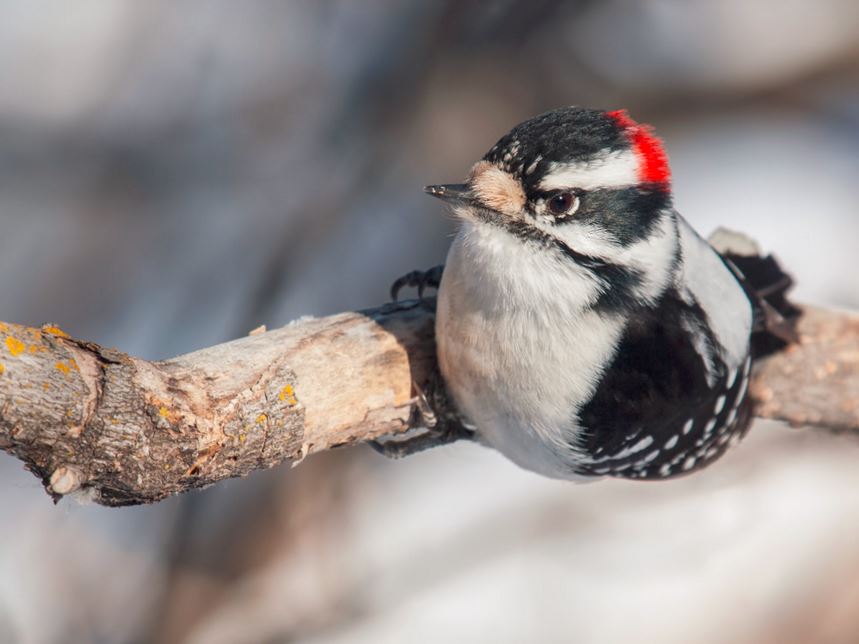
Downy Woodpeckers are regular beneficiaries of this imbalanced system. You will find one or two of them in most mixed flocks in eastern North America, and they rarely call while in those groups. Kimberly Sullivan described their roles in an excellent review article, “Information Exploitation by Downy Woodpeckers in Mixed Species Flocks,” published in Behaviour in 1984. Her conclusions, based on the work of other ornithologists as well as her own field research using predator models, playbacks, and other methods: Downy Woodpeckers join mixed flocks to increase their foraging efficiency. By listening to the calls and alerts of titmice and chickadees they minimize the time they would otherwise lose watching for predators. In a sense, the woodpeckers are co-opting the parids’ communication system.
How can an amateur observer best study mixed flocks? First, you have to ignore that tempting and easy-to-count collection of birds around your backyard feeder. Birds at feeders are not flocking in the scientist’s sense of the term. They are gathered around an artificial food source. True flocking involves coordinated actions of birds (or other animals) moving from place to place as a more-or-less cohesive unit.
One way to simplify the problem of keeping up with a flock is to focus on a single individual and stick with that one bird as long as you can. Woodpeckers make a good focal point. They touch on fewer parts of each tree and linger longer. In fact, follow a Downy Woodpecker in a group for several minutes and you will often see it abandon the flock, as if it had hitched along for the ride only while the flock passed through the local neighborhood—the downy’s home grounds.
If you have more time and more patience, you can also choose the wait-andwatch methodology, which has been used by many professional researchers. Rather than chasing an individual flock (or a single bird), simply be alert when flocks cross your path or pass through your backyard and then try to identify the species and count individuals as each group goes by. With this method you develop a sense of the makeup of a typical flock with a series of snapshots of multiple flocks.
The stand-still method probably misses birds that you would spot by chasing—in other words, it leads to undercounts—but because you don’t have to fight through greenbriers or worry about which way the flock is going next, it’s much less stressful. A stand-still observer takes what comes.
So, are you up for the challenge this fall and winter?

All About Birds
is a free resource
Available for everyone,
funded by donors like you
American Kestrel by Blair Dudeck / Macaulay Library
